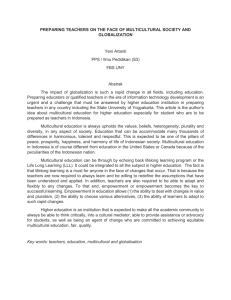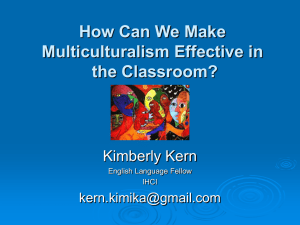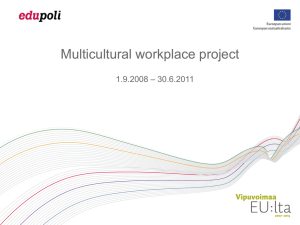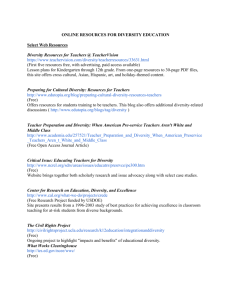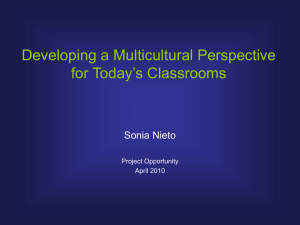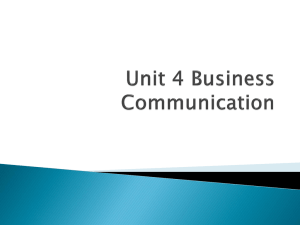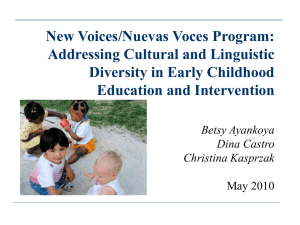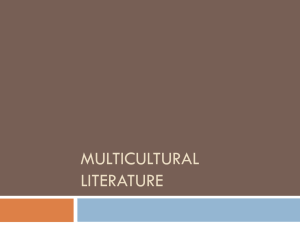ppt
advertisement
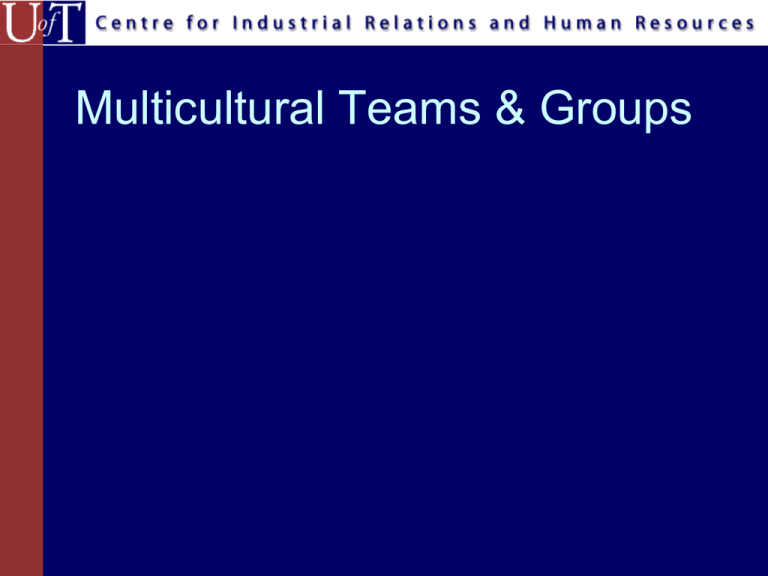
Multicultural Teams & Groups Class Discussion • Discuss experiences in lego block exercise in terms of Cultural Intelligence concepts – Meta cognitive – Cognitive – Motivational – Behavioral Working in Multi cultural Teams • Meta cognitive CQ – Develop learning strategies to learn what the cultural differences in team members’ mental models of a group, a leader, etc. • Cognitive CQ – Learn the content of these differences Working in multicultural teams • Motivational CQ – Persist in trying to determine what these are differences based on observation and experience with team members • Behavioral CQ – Behave in ways appropriate to culture of group members Content of differences in multi cultural teams Points of differences in Multicultural Teams • Mental model of a team • Rules of interaction • Rules of allocation Thomas, Earley Mental models of a team • Specific objectives vs. broad scope • Voluntary membership vs involuntary role • Emphasis on Group goals vs. individual goals – Social loafing Rules of interaction • Confrontational vs. face saving • Hierarchical vs. egalitarian – Information sharing (Janssen & Brett) – Access to resources • Relationship vs. task oriented • Decision making – Collaboratively vs. individually • Interacts with task? Allocation rules • Based on seniority vs. experience • Rules for allocating resources or responsibilities – Need, equity, equality – Rewards depend on organizational norms Group Composition • Group Level outcomes – Advantages and disadvantages of increased cultural diversity in the group – Sub-group formation in moderately diverse groups • Individual Judgments – Mental model of cultural diversity Mental Model of Cultural Diversity • Perception of self as a member of a culturally homogeneous vs. heterogeneous team • • • • Appropriateness of behavior Perceived status Perceived Cohesiveness and satisfaction Identification of self with task vs. cultural group willingness to participate • Perceived level of conflict, • idea sharing • Cost of effort to interact (e.g., benefits of learning language etc) Culture & Group Task • Production vs. decision making groups – Tool use – Emergency • Temporary, project-focused task forces need good inter-member relations because of intensity and duration of member interactions Interaction medium for Multicultural groups Advantages Disadvantages Fewer language difficulties F-t-F is preferred for complex, subtle, ambiguous messages Social information difficulties are less Work Group identity is less •Group formation is slow due to asynchronous communication •Cohesion is less due to lack of physical contact Technology imposes structure Quality? Time to complete task is more Structuring Multi cultural Groups Objectives while working in multicultural teams • Need to develop a shared/hybrid multi cultural team identity based on commonalities beyond common rules of interaction and allocation • Formal coordination mechanisms • Participation norms Earley, Thomas Management Support • Resource Support – Member resources in terms of cultural skills • Design of work – Around groups vs. around individuals • Norms of culture for diversity Management Support • Norms for rewards – Equity, equality, need – Group vs. individual rewards • Evaluation criteria – Encourage exploring vs. exploiting Status of multi cultural group • Cultural differences in the Degree to which membership in high status group is important for members • Work Group status affects individual and group performance Status differences within group members • information access • Resource access Janssen & Brett Training Support • For being effective group members • Using electronic tools for interaction • Cross cultural training Empowerment vs. self management • Degree to which authority is delegated to the group can have positive and negative effects – Setting direction for group to empower vs dictating work processes and procedures • Feeling of empowerment > degree of self management – Empowerment = team beliefs in efficacy, task importance, task significance, autonomy – Self management=autonomy
